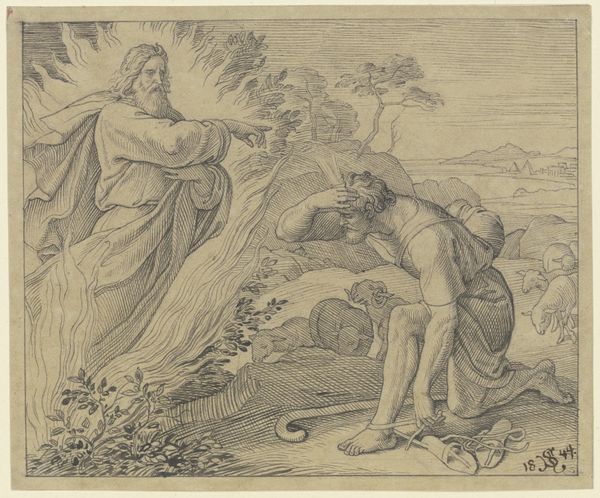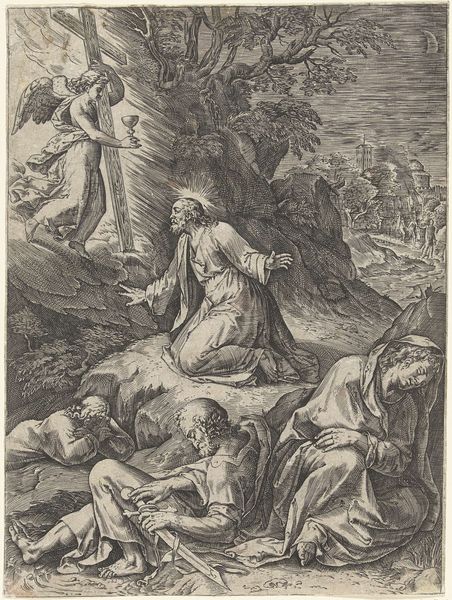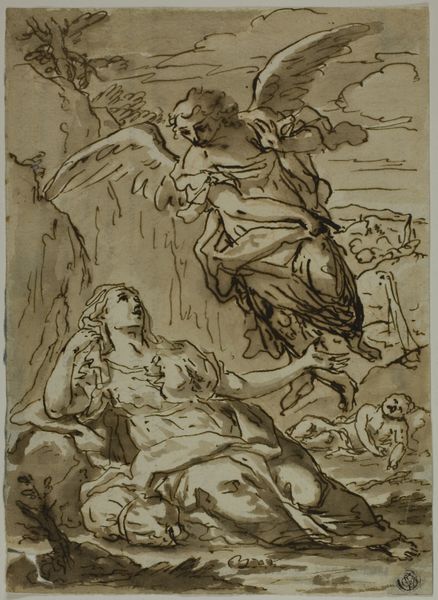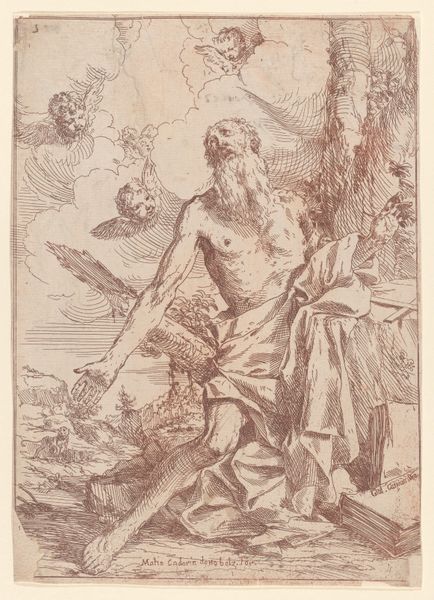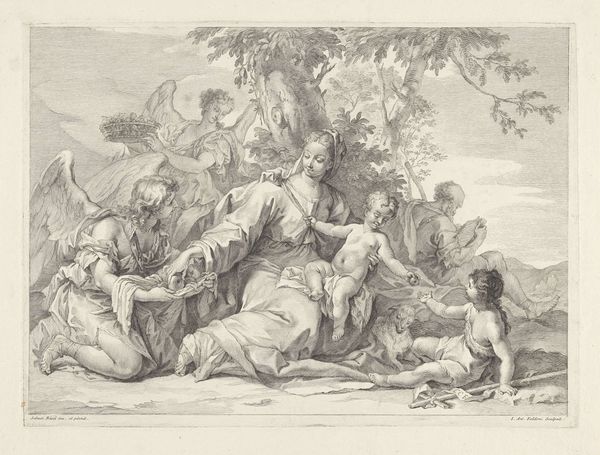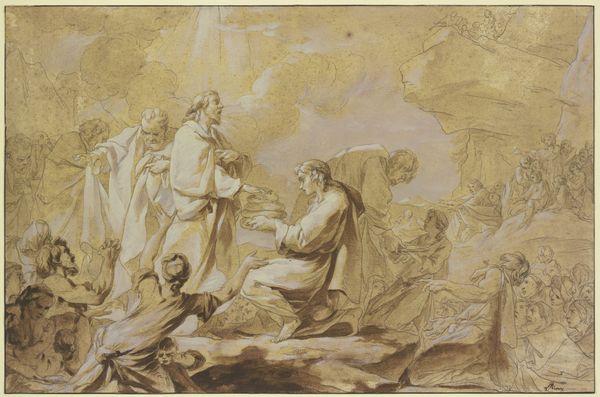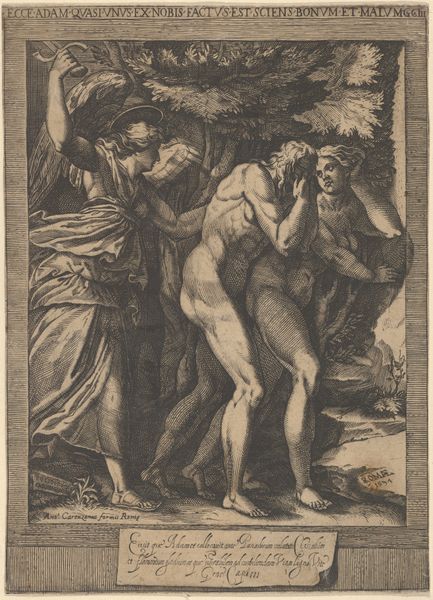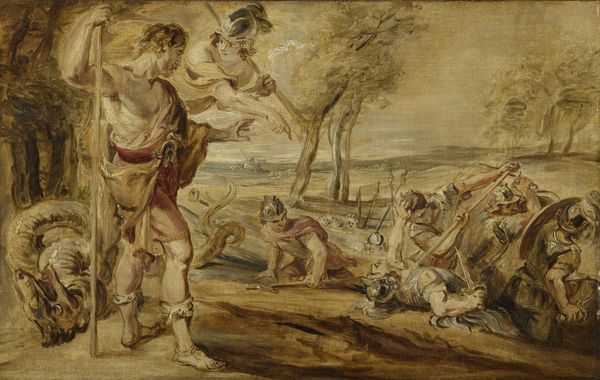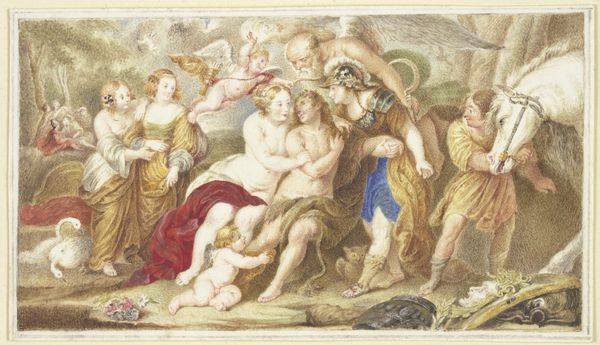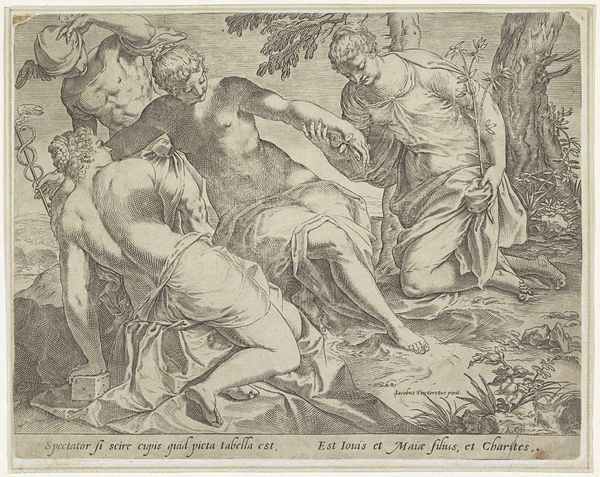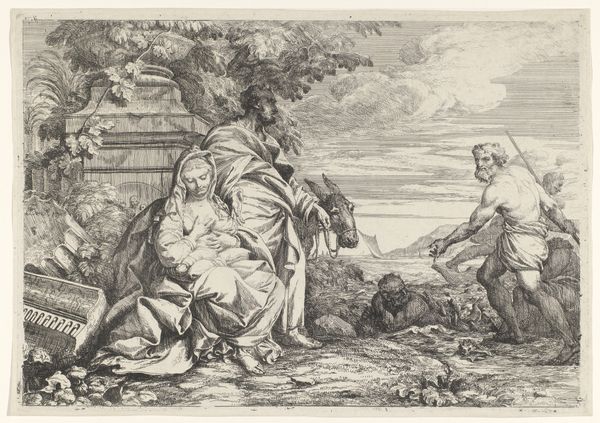
drawing, watercolor, ink
#
drawing
#
allegory
#
narrative-art
#
baroque
#
ink painting
#
pencil sketch
#
landscape
#
figuration
#
watercolor
#
ink
#
watercolour illustration
#
history-painting
Dimensions: height 206 mm, width 327 mm
Copyright: Rijks Museum: Open Domain
Curator: Here we have Elias van Nijmegen’s "Hercules at the Crossroads," a drawing dating roughly from 1677 to 1755, rendered in ink and watercolor. Editor: Immediately, the asymmetrical composition strikes me. The figure cluster on the left is weighted by color, yet the directional force of the figure pointing right pulls the eye toward a very muted destination. An intentional disharmony, perhaps? Curator: Indeed. The allegory here concerns choice. Hercules, weary, is approached by Vice, who offers a life of pleasure, and Virtue, who points to a more arduous, but ultimately fulfilling, path, symbolized by the temple in the distance. The objects scattered around Hercules hint at momentary indulgences. Editor: The linework, especially in the draped figures of Vice and Virtue, suggests a Baroque influence. However, the rather muted palette creates a feeling of restraint. I wonder, is this intended as moralizing, or simply an observation of the human condition? Curator: Think of it as an encoding of cultural values, the depiction becomes a vehicle. Consider the psychological weight placed on figures like Hercules—mythic heroes who become models for emulation. Vice is alluring, yes, but presented as ultimately shallow. Editor: The shallow watercolor application certainly gives her less visual weight! Yet, look at the contrast in execution. The idealized, almost neoclassical temple stands stark against the sketchy mountains, reflecting Hercules’ potential transcendence of earthly struggle. Curator: And transcendence, especially moral transcendence, reinforces the societal underpinnings that are continuously recycled through cultural artifacts, as we find here. Editor: Looking closely at the lines and the intentional but restrained application of color, the technique here itself suggests a moral. Not excess, but careful thought should govern all action—including artistic rendering. Curator: Well, seeing it this way enriches the whole piece. I initially saw the contrast between the female figures, now you are pointing out the visual elements as representing both virtue and transcendence. Editor: I concur; your decoding reveals cultural intent, which illuminates the construction in full.
Comments
No comments
Be the first to comment and join the conversation on the ultimate creative platform.
